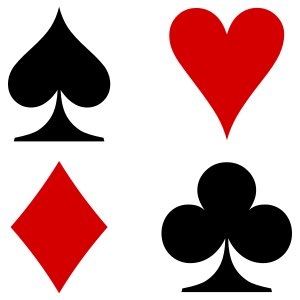The Last Club

We have a deck of 52 cards whose order is uniformly at random (with
all permutations having the same probability). Each time we take one
card from the top and remove it until all 13 Club cards are completely
removed. How many cards do we remove on average?
Link to the problem on Twitter: https://twitter.com/Riazi_Cafe/status/1662455315546161152
What is the probability that a particular non-Club card comes after all the Clubs?
How does the final solution relate to the above probability?
The correct answer is equal to: \(13 + 39
\cdot 13/14 \simeq 49.2142857143\).
Obviously, all 13 Club cards are removed in this process. Now consider a
card with another suit, say a Heart card \(h\). For now, we ignore all cards except
for the 13 cards of Club and card \(h\). Now, consider the position of card
\(h\) relative to the 13 Club cards.
There are 14 possibilities for it:
\(h\) comes before all the Club cards,
\(h\) comes between between the first and second Club cards,
\(h\) comes between between the second and the third Club cards,
\(\ldots\)
\(h\) comes after all of the Club cards.
\(h\) will be removed in the process
for all of the first 13 cases, (the last case is the only exception).
Because the order of the cards is uniformly at random, all of the 14
possibilities have the same probability and thus we remove card \(h\) with probability \(13/14\). Therefore, each of the 39 non-Club
cards will be removed with a probability of \(13/14\) in this process, and therefore, the
answer to the problem is equal to: \(13 +
(13/14) \cdot 39\) (keep in mind the linearity of
expectation).
Link to the solution on Twitter: https://twitter.com/Riazi_Cafe/status/1663022266064556033